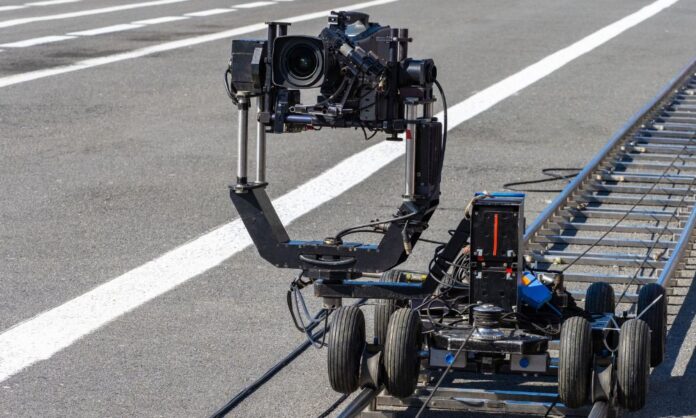Lights, camera, action! Welcome to the magical world of film production, where every scene, every shot, and every movement is a deliberate act of storytelling. Among these techniques, there’s one that has been used in countless iconic moments in cinema history: the dolly shot.
But what exactly is a dolly shot, and how does it work? Whether you’re an aspiring filmmaker looking to enhance your cinematic language or a movie buff curious about the technical aspects behind your favorite scenes, this guide is for you.
What Is a Dolly Shot?
A dolly shot is a specific type of camera movement that involves moving the entire camera and its mount, or dolly, along a predetermined track. This motion can be forward or backward—also known as pushing in or pulling out—or side to side, creating a smooth, gliding visual effect.
The purpose of a dolly shot can vary greatly depending on the context. It can be used to follow a character’s movement, reveal important details in a scene, or create a sense of dynamism and fluidity. Dolly shots are typically characterized by their steadiness and precision, offering a more controlled perspective.
How Does It Work?
At its core, a dolly shot is created by placing the camera on a wheeled mount, which is then moved along a track. The track can be straight, curved, or even circular, depending on the desired effect.
The movement of the dolly is typically controlled by a dolly grip, a crew member specifically trained to operate the equipment smoothly and safely. The dolly grip pushes or pulls the dolly along the track while the camera operator focuses on framing the shot.
Famous Uses in Film
Knowing when to use dolly track systems for filming is essential, and several famous filmmakers have utilized them to create a specific effect. Have you seen any of these movies?
Raiders of the Lost Ark (1981)
Steven Spielberg’s iconic adventure movie uses the dolly shot to great effect during its thrilling action sequences. One memorable instance is when Indiana Jones (Harrison Ford) is dragged behind a moving truck. The camera dollies alongside him, keeping pace with the action and capturing every detail of his struggle.
Pulp Fiction (1994)
Quentin Tarantino opens his film with a dolly shot that sets the tone for the whole story. The camera tracks backward from a close-up of Honey Bunny (Amanda Plummer) and Pumpkin (Tim Roth) as they discuss their plans to rob the diner they’re in. The shot gradually reveals more of their surroundings, building tension until the sudden climax of the scene.
Children of Men (2006)
Alfonso Cuarón’s Children of Men is renowned for its long, intricate dolly shots. Among the most notable is the car ambush scene. Inside a moving vehicle, the camera pans and dollies to capture the reactions of the characters as they are attacked. Despite the chaos, the camera movement remains smooth and controlled, reflecting the film’s blend of visceral intensity and thoughtful storytelling.
What is a dolly shot, and how does it work? It’s a powerful yet highly controlled visual tool that can transform a scene from banal to extraordinary, inviting the audience into the characters’ worlds and enriching the overall viewing experience.








